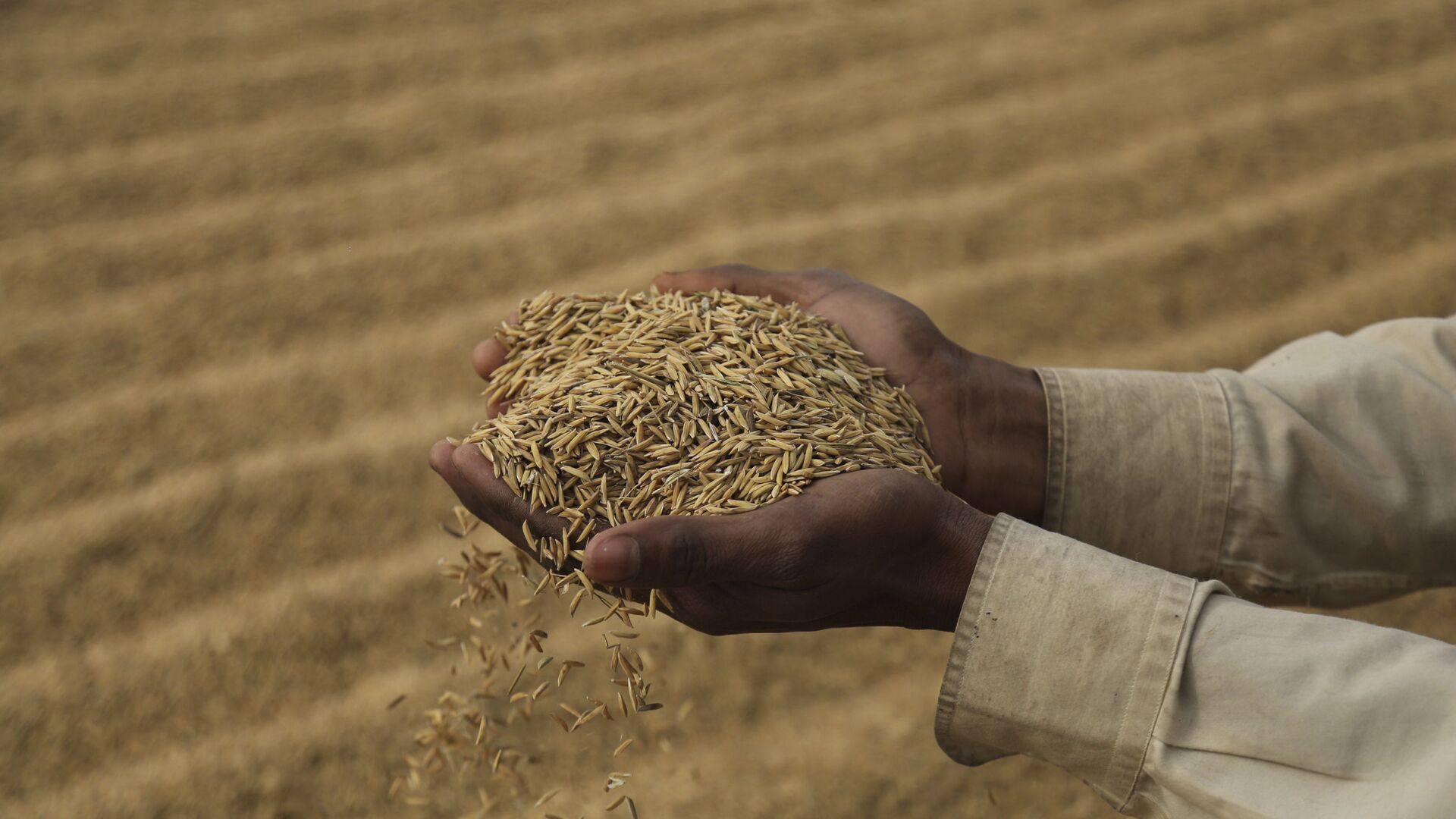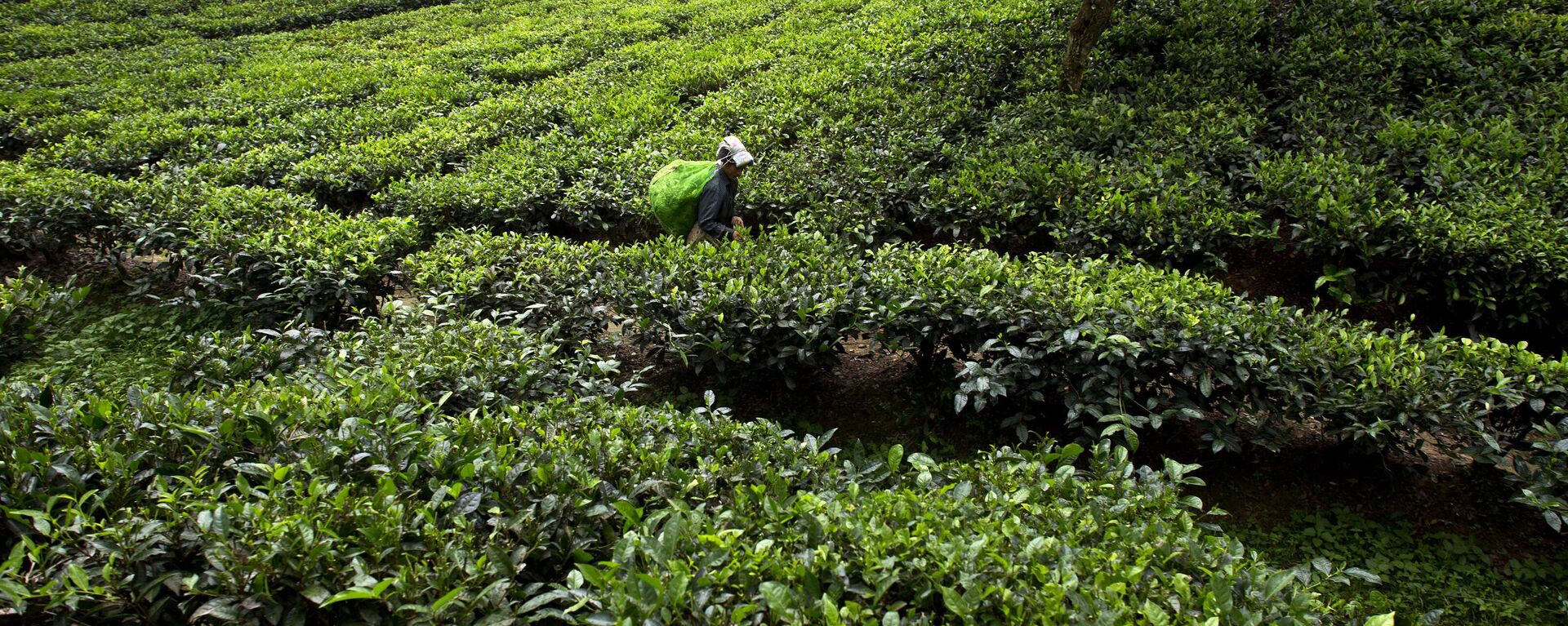https://sputniknews.in/20230706/global-rice-prices-boiling-over-african-and-asian-nations-may-face-shortages--2865174.html
Global Rice Prices Boiling Over: African and Asian Nations May Face Shortages
Global Rice Prices Boiling Over: African and Asian Nations May Face Shortages
Sputnik India
As the cost of rice exports continues to increase and is the highest in its eleven years, reports now says that several countries in Asia and Africa could face shortage this year.
2023-07-06T17:39+0530
2023-07-06T17:39+0530
2023-07-06T17:39+0530
india
climate change
food
staple food
food security
food insecurity
food shortage
food crisis
china
africa
https://cdn1.img.sputniknews.in/img/07e6/0c/17/215313_0:160:3073:1888_1920x0_80_0_0_b35378b878459d4eb14b8ec578b63e6b.jpg
As rice export prices continue to augment to their highest levels in eleven years, reports have indicated that several countries in Asia and Africa could face shortages this year. Since the beginning of the Ukraine conflict, the price of grains and other crops has been increasing due to Western sanctions on the export of Russian fertilizers, thereby threatening global food security.G.V. Ramanjaneyulu, executive director at India's Centre for Sustainable Agriculture, spoke with Sputnik and explained that there are many reasons behind the rise in the price of rice, including the increase in the cost of fertilizers, climate change, and countries not wanting to grow rice due to its harmful effect on the environment.“Overall, the cost of rice production has gone up,” the expert said.“However, nothing the same is happening in India. Rice cultivation is high in India, at the same it is the world’s most populated country and rice is a staple food in more than 90% of Indian kitchens,” Ramanjaneyulu shared.India exported nearly 56 million tonnes of rice in 2022, accounting for more than 40 percent of global rice exports. The export price has increased in India and other top global producers including Bangladesh, China, Indonesia, Thailand, and Vietnam.Weather PhenomenaMeanwhile, erratic weather patterns like El Nino also impact crop production.“El Nino is impacting rice output in almost all producing countries," Nitin Gupta, vice president of Olam India's rice business, told Reuters.Global rice inventories are set to drop to a six-year low of 170.2 million tonnes by the end of 2023/24, as stocks fall in top producers China and India, the US Department of Agriculture has said, after rising demand in recent years.In terms of export, India will witness a decline in the fiscal year 2024 (FY24) after the increased 20% export duty on non-basmati varieties is expected to start hitting home from April onward, predicted Vinod Kaul, executive director of the All India Rice Exporters Association. In FY23, India exported 17.79 million tonnes (MT) of non-basmati rice compared with 17.3 MT in FY22, while broken rice exports were 23% lower at 3 MT because of a ban on shipments imposed to keep domestic prices down.
https://sputniknews.in/20230425/india-can-become-enduring-supplier-of-food-products-to-russia-indian-business-delegation-head-1687359.html
india
china
africa
south africa
north africa
south asia
southeast asia
Sputnik India
feedback.hindi@sputniknews.com
+74956456601
MIA „Rossiya Segodnya“
2023
Deexa Khanduri
https://cdn1.img.sputniknews.in/img/07e6/0c/13/138923_52:0:533:481_100x100_80_0_0_cadf23d341691fc65ff2b22fd1afe584.jpg
Deexa Khanduri
https://cdn1.img.sputniknews.in/img/07e6/0c/13/138923_52:0:533:481_100x100_80_0_0_cadf23d341691fc65ff2b22fd1afe584.jpg
News
en_IN
Sputnik India
feedback.hindi@sputniknews.com
+74956456601
MIA „Rossiya Segodnya“
Sputnik India
feedback.hindi@sputniknews.com
+74956456601
MIA „Rossiya Segodnya“
Deexa Khanduri
https://cdn1.img.sputniknews.in/img/07e6/0c/13/138923_52:0:533:481_100x100_80_0_0_cadf23d341691fc65ff2b22fd1afe584.jpg
global rice cost on boil: africa, asia nations may face shortage, production, cost of rice exports, ukraine-russsia conflict, western sanctions, global food security, g.v.ramanjaneyulu, cost of fertilizers, climate change, rice cultivation, bangladesh, china, india, indonesia, thailand, vietnam, el nino, crop production, rice production
global rice cost on boil: africa, asia nations may face shortage, production, cost of rice exports, ukraine-russsia conflict, western sanctions, global food security, g.v.ramanjaneyulu, cost of fertilizers, climate change, rice cultivation, bangladesh, china, india, indonesia, thailand, vietnam, el nino, crop production, rice production
Global Rice Prices Boiling Over: African and Asian Nations May Face Shortages
Deexa Khanduri
Sputnik correspondent
With low production of rice in many countries and exports dropping, experts now predict that the world may experience its largest deficit between supply and demand in 2023.
As
rice export prices continue to augment to their highest levels in eleven years, reports have indicated that several countries in
Asia and
Africa could face shortages this year.
Since the beginning of the Ukraine conflict, the price of grains and other crops has been increasing due to Western sanctions on the export of Russian fertilizers, thereby threatening global food security.
G.V. Ramanjaneyulu, executive director at India's Centre for Sustainable Agriculture, spoke with Sputnik and explained that there are many reasons behind the rise in the price of rice, including the increase in the cost of fertilizers, climate change, and countries not wanting to grow rice due to its harmful effect on the environment.
“Overall, the cost of rice production has gone up,” the expert said.
“One of the key reasons why prices are going up is rice cultivation across the globe is going down. Many countries have cut down the production of rice because of its impact on the environment. Rice requires more water and energy, so many countries are moving away. Rice is a water-intensive crop,” Dr Ramanjaneyulu explained.
“However, nothing the same is happening in India. Rice cultivation is high in India, at the same it is the world’s most populated country and rice is a staple food in more than 90% of Indian kitchens,” Ramanjaneyulu shared.
India exported nearly 56 million tonnes of rice in 2022, accounting for more than 40 percent of global rice exports. The export price has increased in India and other top global producers including Bangladesh, China, Indonesia, Thailand, and Vietnam.
Meanwhile, erratic weather patterns like El Nino also impact crop production.
“El Nino is impacting rice output in almost all producing countries," Nitin Gupta, vice president of Olam India's rice business, told Reuters.
Global
rice inventories are set to drop to a six-year low of 170.2 million tonnes by the end of 2023/24, as stocks fall in top producers China and India, the US Department of Agriculture has said, after rising demand in recent years.
In terms of export, India will witness a decline in the fiscal year 2024 (FY24) after the increased 20% export duty on non-basmati varieties is expected to start hitting home from April onward, predicted Vinod Kaul, executive director of the All India Rice Exporters Association.
In FY23, India exported 17.79 million tonnes (MT) of non-basmati rice compared with 17.3 MT in FY22, while broken rice exports were 23% lower at 3 MT because of a ban on shipments imposed to keep domestic prices down.



